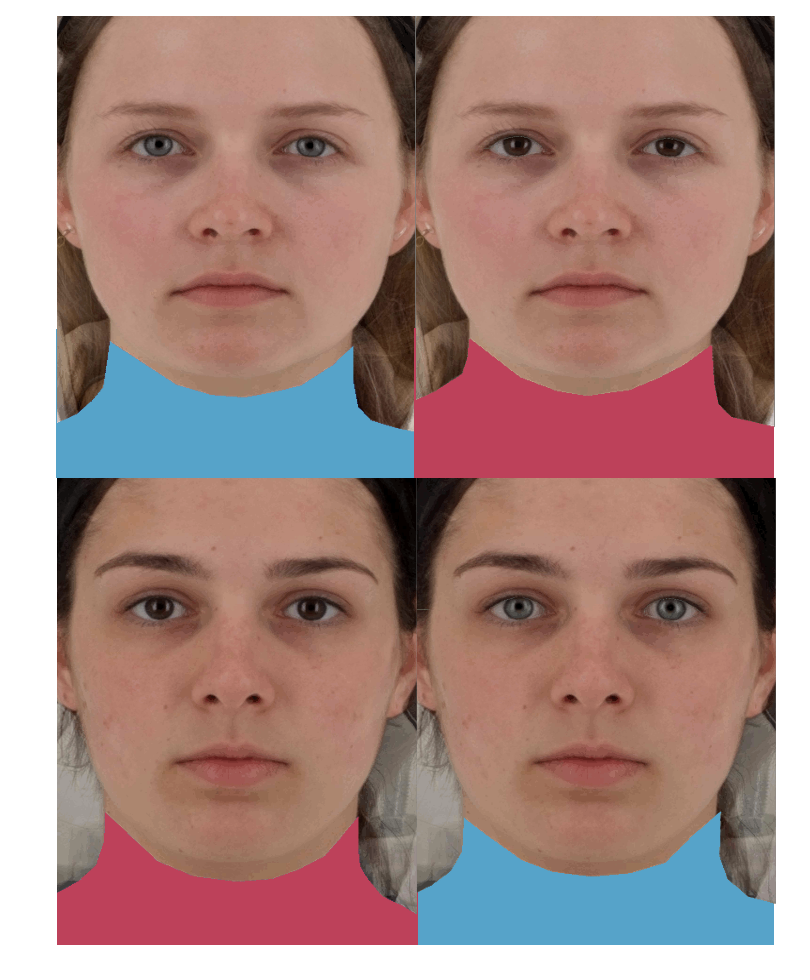"You are what you wear" is actually true, according to new research led by the University of St Andrews.
Led by researchers from the School of Psychology and Neuroscience, the new study reveals, for the first time, scientifically, that a person's eye colour determines the colour of clothing that suits them.
Published in the journal Psychology of Aesthetics, Creativity, and the Arts(Monday 23 October) the study reveals strong preferences that favoured 'cool' blue hues in fabric match grey or blue eyes and 'warm' orange/red fabric hues to match dark brown eyes.
Lead researcher Professor David Perrett, from the School of Psychology and Neuroscience, said: "We invited 200 participants to provide their opinions on what clothing colours suited different faces. We were very surprised at how much agreement there was; participants chose similar clothing colours favouring reds and blues, however the colours chosen depended on who was wearing the garment.
"Everyone wants to look their best, but what should guide the choice and colour of our clothing? Previously, our work indicated the importance of a person's complexion for clothing colour choice, but we did not define the critical aspect of complexion. Those with a darker complexion tend to have darker pigmentation in their hair, their eyes, and their skin. Any one of these features could be the basis of clothing colour choice. We thought that skin tone would be the critical feature as this is stressed in virtually all stylist advice. Surprisingly skin colour turned out to be unimportant."

The team of researchers asked participants to undertake two experiments to test the relative importance of skin, eye, and hair colour for clothing colour choice. One experiment used images of White women photographed under standard lighting: half had light-coloured skin, hair and eyes, and half had darker skin, hair, and eyes. These images were also transformed so that the skin tone of the naturally fair faces was altered to give them a tan and the skin colour of the naturally darker faces was lightened.
One hundred participants adjusted the colour of clothing for the face images with and without transformed skin colour. The participants chose from a whole spectrum of colours that could be adjusted in brightness or in saturation (vividness). Despite the marked changes in skin tone, colour preferences for clothing stayed the same. Reds were chosen for the originally dark faces even when their skin was lightened. Blues were chosen for the originally light faces even when their skin was darkened. The results pointing to the critical role of eye colour or hair colour which had not been altered.






